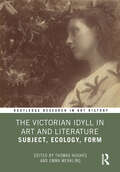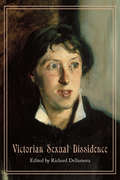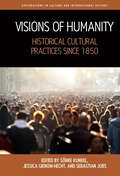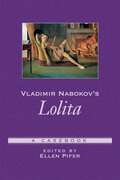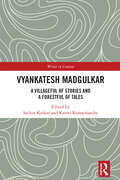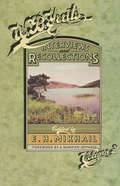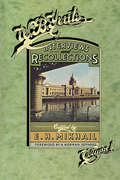- Table View
- List View
Vera Lex Historiae?: Constructions of Truth in Medieval Historical Narrative
In his Historia Ecclesiastica Gentis Anglorum (circa 731 CE), Bede says that he will write his account of the past of the English following only vera lex historiae (the true law of history). Whether explicitly or implicitly, historians narrate the past according to conceptions of what constitutes historical truth that emerge in the use of narrative strategies, formulae, and other textual forms, in establishing one’s ideological authority or that of one’s informants, and in faithfulness to a cultural, narrative, or poetic tradition. But what if we extend the scope of what we understand by history (especially in premodern settings) to include not just the writings of historians legitimated by the Latinate matrix of Christianized classical history writing, but also collective narratives, practices, rituals, oral poetry, liturgy, artistic representations, and acts of identity? In these genres of re-enacting the past as, or as representation of, the present, we find a plethora of modes of constructions of historical truth, narrative authority, and reliability. Vera Lex Historiae? comprises contributions that reveal the variety of evental strategies by which historical truth was constructed in late antiquity and the earlier Middle Ages, and the range of procedures by which such narratives were first established as being historical and then as “true” histories. This is not only a matter of narrative strategies, but also of habitus — ways of living and acting in the world that are deeply imbricated with the commemoration and re-enactment of the past by communities and by individuals. In doing this, Vera Lex Historiae? aims to recover something of the plurality of modes of preserving and reenacting the past available in late antiquity and the earlier middle ages which we often overlook because of preconceived notions of what constitutes history writing.
Verb-Verb Complexes in Asian Languages
This volume is the first to present a detailed survey of the systems of verb-verb complexes in Asian languages from both a synchronic and diachronic perspective. Many Asian languages share, to a greater or lesser extent, a unique class of compound verbs consisting of a main verb and a quasi-auxiliary verb known as a 'vector' or 'explicator'. These quasi-auxiliary verbs exhibit unique grammatical behaviour that suggests that they have an intermediate status between full lexical verbs and wholly reduced auxiliaries. They are also semantically unique, in that when they are combined with main verbs, they can convey a rich variety of functional meanings beyond the traditional notions of tense, aspect, and modality, such as manner and intensity of action, benefaction for speaker or hearer, and polite or derogatory styles in speech. In this book, leading specialists in a range of Asian languages offer an in-depth analysis of the long-standing questions relating to the diachrony and geographical distribution of verb-verb complexes. The findings have implications for the general understanding of the grammaticalization of verb categories, complex predicate formation, aktionsart and event semantics, the morphology-syntax-semantics interface, areal linguistics, and typology.
The Verbal Domain (Oxford Studies in Theoretical Linguistics #64)
This volume features cutting-edge research from leading authorities on the nature and structure of the verbal domain and the complexity of the Verb Phrase (VP). The book is divided into three parts, representing the areas in which contemporary debate on the verbal domain is most active. The first part focuses on the V head, and includes four chapters discussing the setup of verbal roots, their syntax, and their interaction with other functional heads such as Voice and v. Chapters in the second part discuss the need to postulate a Voice head in the structure of a clause, and whether Voice is different from v. Voice was originally intended as the head hosting the external argument in its specifier, as well as transitivity. This section explores its relationship with "syntactic" voice, i.e. the alternation between actives and passives. Part three is dedicated to event structure, inner aspect, and Aktionsart. It tackles issues such as the one-to-one relation between argument structure and event structure, and whether there can be minimal structural units at the basis of the derivation of any sort of XP, including the VP.
Verbale Interaktion: Studien zur Empirie und Methodologie der Pragmatik
Dieter Flader präsentiert Kommunikationsanalysen, die das systematische Verhältnis der Sprache zu Prozessen der Verständigung und des sozialen Handelns aufdecken und somit unseren Erkenntnisstand über Regularitäten des Sprechens in sozialer Interaktion weiterentwickeln.
The Verticalization Model of Language Shift: The Great Change in American Communities
This book introduces a new and still emerging theoretical framework for understanding language shift and uses this approach to explore a range of minority language communities in the United States. To date, approaches to language shift have typically relied on explaining the process through descriptive sociolinguistic models, i.e., how the community first becomes bilingual in both the majority and minority languages and then eventually shifts entirely to the majority language. The contributions in this volume instead attribute shift to a change from local control of tightly interconnected 'horizontal' institutions within a community to more external or 'vertical' control of those increasingly autonomous institutions outside the community; in short, language shift is driven by specific changes in community structure. In addition, unlike previous approaches to language shift, the one proposed here is generalizable. Following an introduction to the theory, the main five chapters in the book offer case studies of individual language communities, in different contexts and different periods. The final three chapters of the book take a broader perspective, looking beyond the United States: two leading specialists in the field provide critical commentaries on the theoretical approach and offer refinements to a theory of language shift, before a concluding chapter draws together the findings of the case studies and reflections on the commentaries. The volume will appeal to researchers and students in the fields of language revitalization, community studies, sociolinguistics, and social history.
A Victorian Art of Fiction: Essays on the Novel in British Periodicals 1830-1900
First published in 1979, each volume contains a collection of essays on the novel drawn from periodicals which demonstrates the primary concerns of those discussing the nature and purpose of prose fiction in the period from 1830 to 1900. The essays reflect what was thought and said about the art of fiction and reveal what journalists of these periodicals thought were the most urgent critical concerns facing the working reviewer. Including an introduction which assesses the issues raised by the best periodicals at the time, each anthology is designed to provide students of Victorian fiction and critical theory with a collection of essays on the art of fiction in a convenient and durable form.
The Victorian Idyll in Art and Literature: Subject, Ecology, Form (Routledge Research in Art History)
Resonating with contemporary ecological and queer theory, this book pioneers the theorization of the Victorian idyll, establishing its nature, lineaments, and significance as a formal mode widely practised in nineteenth-century British culture across media and genre. Chapters trace the Victorian idyll’s emergence in the 1830s, its flourishing in the 1860s, and its evolution up to the century’s close, drawing attention to the radicalism of idyllic experiments with pictorial, photographic, dramatic, literary, and poetic form in the work of canonical and lesser-known figures. Approaching the idyll through three intersecting categories—subject, ecology, and form—this book remaps Victorian culture, reshaping thinking about artistic form in the nineteenth century, and recalibrating accepted chronologies. In the representations by a host of Victorian artists and writers engaging with other-than-human forms, and in the natures of the subjectivities animated by these encounters, we find versions of Victorian ecology providing provocative imaginative material for ecocritics, scholars, writers, and artists today. This book will be of interest to scholars working in art history, English literature, Victorian studies, British history, queer and trans* theory, musicology, and ecocriticism, and will enliven debates pertaining to the environmental across periods.
Victorian Sexual Dissidence
Recent critical and historical work on the late-Victorian period has furnished a vocabulary for discussing gender and sexuality. These popular terms include categories such as homo/hetero, patriarchal/feminist, and masculine/effeminate. This collection exploits this framework—while refining and resisting it in places—to show how certain Victorians imagined difference in ways that continue to challenge us today. One essay, for example, traces the remarkable feminist appropriation of male-identified fields of study, such as Classical philology. Others address the validation of male bodies as objects of desire in writing, painting, and emergent modernist choreography. The writings shed light on the diverse interests served by a range of cultural practitioners and on the complex ways in which the late Victorians invented themselves as modern subjects. This volume will be essential reading for students of British literary and cultural history as well as for those interested in feminist, gay, and lesbian studies. Contributors are: Oliver Buckton, Richard Dellamora, Dennis Denisoff, Regenia Gagnier, Eric Haralson, Andrew Hewitt, Christopher Lane, Thaïs Morgan, Yopie Prins, Kathy Alexis Psomiades, Julia Saville, Robert Sulcer, Jr., Martha Vicinus.
Violence in the Work of Composition: Recognizing, Intervening, Ameliorating
Focusing on overt and covert violence and bringing attention to the many ways violence inflects and infects the teaching, administration, and scholarship of composition, Violence in the Work of Composition examines both forms of violence and the reciprocal relationships uniting them across the discipline. Addressing a range of spaces, the collection features chapters on classroom practices, writing centers, and writing program administration, examining the complicated ways writing instruction is interwoven with violence, as well as the equally complicated ways writing teachers may recognize and resist the presence and influence of violence in their work. This book provides a focused, nuanced, and systematic discussion of violence and its presence and influence across pedagogical and administrative sites. Violence in the Work of Composition offers a close look at the nature of violence as it emerges in the work of composition; provides strategies for identifying violence, especially covert violence, addressing its impact and preventing its eruption across many sites; and invites readers to reflect on both the presence of violence and the hope for its cessation. Contributors consider, first, how compositionists can recognize the ways their work inadvertently enacts and/or perpetuates violence and, second, how they can intervene and mitigate that violence. Rich with the voices of myriad stakeholders, Violence in the Work of Composition initiates an essential conversation about violence and literacy education at a time when violence in its many forms continues to shape our culture, communities, and educational systems. Contributors: Kerry Banazek, Katherine Bridgman, Eric Camarillo, Elizabeth Chilbert Powers, Joshua Daniel, Lisa Dooley, Allison Hargreaves, Jamila Kareem, Lynn C. Lewis, Trevor Meyer, Cathryn Molloy, Kellie Sharp-Hoskins, Ellen Skirvin, Krista Speicher Sarraf, Thomas Sura, James Zimmerman
Virgil Aeneid XII: A Selection
This is the OCR-endorsed publication from Bloomsbury for the Latin AS and A-Level (Group 3) prescription of Aeneid Book XII, lines 1–106, 614–727, and the A-Level (Group 4) prescription of Aeneid Book XII, lines 728–952, giving full Latin text, commentary and vocabulary, with a detailed introduction that also covers the prescribed text to be read in English for A Level.Aeneid XII is the final book of Virgil's Roman epic. The war fought between Aeneas' refugee Trojans and the people of Latium here reaches a bloody, moving climax. The OCR selection contains two scenes of rich emotion focussed on the Italian war-leader Turnus as he reacts to military defeat and crisis, followed by the full narrative of the decisive single combat between Turnus and Aeneas with which the poem concludes. This is one of the great passages in Latin literature – grand in content and style, complex and challenging in its subject matter. Resources are available on the Companion Website.
Virginia Woolf and the World of Books (Clemson University Press)
Virginia Woolf and the World of Books will examine Leonard and Virginia Woolf’s Hogarth Press as a key intervention in modernist and women’s writing and mark its importance to independent publishing, bookselling, and print culture at large. The research in this volume coincides with the centenary of the founding of Hogarth Press in 1917, thus making a timely addition to scholarship on the Woolfs and print culture.
Virginia Woolf, Europe, and Peace: Vol. 2 Aesthetics and Theory (Clemson University Press)
From the “prying,” “insidious” “fingers of the European War” that Septimus Warren Smith would never be free of in Mrs Dalloway to the call to “think peace into existence” during the Blitz in “Thoughts on Peace in an Air Raid,” questions of war and peace pervade the writings of Virginia Woolf. This volume asks how Woolf conceptualised peace by exploring the various experimental forms she created in response to war and violence. Comprised of fifteen chapters by an international array of leading and emerging scholars, this book both draws out theoretical dimensions of Woolf’s modernist aesthetic and draws on various critical frameworks for reading her work, in order to deepen our understanding of her writing about the politics of war, ethics, feminism, class, animality, and European culture. The chapters collected here look at how we might re-read Woolf and her contemporaries in the light of new theoretical and aesthetical innovations, such as peace studies, post-critique, queer theory, and animal studies. It also asks how we might historicise these frameworks through Woolf’s own engagement with the First and Second World Wars, while also bringing her writings on peace into dialogue with those of others in the Bloomsbury Group. In doing so, this volume reassesses the role of Europe and peace in Woolf’s work and opens up new ways of reading her oeuvre.
Virginia Woolf, Europe, and Peace: Vol. 1 Transnational Circulations (Clemson University Press)
Virginia Woolf, Europe, and Peace: Transnational Circulations enlarges our understanding of Virginia Woolf’s pacifist ideology and aesthetic response to the World Wars by re-examining her writings and cultural contexts transnationally and comparatively through the complex interplay between modernism, politics, and aesthetics. The “transnational” paradigm that undergirds this collection revolves around the idea of transnational cultural communities of writers, artists, and musicians worldwide who were intellectually involved in the war effort through the forging of pacifist cultural networks that arose as a form of resistance to war, militarism, and the rise of fascism. The book also offers philosophical approaches to notions of transnational pacifism, anti-war ethics, and decolonization, examining how Woolf’s prose undermines center/edge or self/other bifurcations. Breathing new life into Woolf’s anti-war writings through a transnational lens and presenting us with the voices and perspectives of a range of significant scholars and critics, the chapters in this volume engage with mobile and circulatory pacifisms, calling attention to the intersections of modernist inquiries across the arts (art, music, literature, and performance) and transnational critical spaces (Asia, Europe, and the Americas) to show how the convergence of different cultural and linguistic horizons can significantly expand and enrich our understanding of Woolf’s modernist legacy.
Virtual English as a Lingua Franca (Routledge Studies in Applied Linguistics)
This collection offers a comprehensive account of the development of intercultural communication strategies through Virtual English as a lingua franca, reflecting on the ways in which we make pragmatic meaning in today’s technology-informed globalized world. The volume places an emphasis on analyzing transmodal, trans-semiotic, and transcultural discourse practices in online spaces, providing a counterpoint to existing ELF research which has leaned towards unpacking formal features of ELF communication in face-to-face interactions. The chapters explore how these practices are characterized and then further sustained via non-verbal semiotic resources, drawing on data from a global range of empirical studies. The book prompts further reflection on readers’ own experiences in online settings and the challenges of VELF while also supplying educators in these contexts with the analytical resources to better bridge the gap between formal and informal learning. Highlighting the dynamic complexity of online intercultural communication in the twenty-first century, this book is a valuable resource for students and scholars in applied linguistics, language education, digital communication, and intercultural communication.
Visions of Humanity: Historical Cultural Practices since 1850 (Explorations in Culture and International History #11)
This book offers a critical reflection of the historical genesis, transformation, and problématique of “humanity” in the transatlantic world, with a particular eye on cultural representations. “Humanity,” the essays show, was consistently embedded in networks of actors and cultural practices, and its meanings have evolved in step with historical processes such as globalization, cultural imperialism, the transnationalization of activism, and the spread of racism and nationalism. Visions of Humanity applies a historical lens on objects, sounds, and actors to provide a more nuanced understanding of the historical tensions and struggles involved in constructing, invoking, and instrumentalizing the “we” of humanity.
Vladimir Nabokov's Lolita: A Casebook (Casebooks in Criticism)
Midway through the last century, Lolita burst on the literary scene--a Russian exile's extraordinary gift to American letters and the New World. The scandal provoked by the novel's subject--the sexual passion of a middle-aged European for a twelve-year-old American girl--was quickly upstaged by the critical attention it received from readers, scholars, and critics around the world. This casebook gathers together an interview with Nabokov as well as nine critical essays about Lolita. The essays follow a progression focusing first on textual and thematic features and then proceeding to broader topics and cultural implications, including the novel's relations to other works of literature and art and the movies adapted from it.
Vocabularies of Public Life: Empirical Essays in Symbolic Structure (Routledge Revivals)
First published in 1992, Vocabularies of Public Life explores the revolution that has taken place in our understanding of contemporary culture and decodes a number of the symbols which now dominate public life. Wuthnow divides the essays collected here into three distinct ‘vocabularies.’ Part I examines the ways in which religious and scientific languages function as vocabularies of conviction in public life, Part II focuses on music and art as vocabularies of expression, and Part III considers law, ideology, and public policy as vocabularies of persuasion. The contributors discuss such diverse subjects as American spiritualism, the syntax of modern dance and the social contexts of number one songs. What unifies the book is the common concern with the concrete, everyday manifestations of culture and the importance of understanding its basic structure. This book will be of interest to specialists and scholars of various disciplines such as linguistics, literature, media studies, popular culture, and sociology.
Vom Salon zur Barrikade: Frauen der Heine-Zeit (Heine Studien)
Porträts von 25 Frauen aus der ersten Hälfte des 19. Jahrhunderts. Der Band gibt einen Einblick in die Spannweite weiblicher Aktivitäten - von der Sängerin bis zur Ärztin, von der Komponistin bis zur Frauenrechtlerin. Mit Beiträgen über: Rahel Varnhagen, Caroline Fouqué, Lea Mendelssohn, Jeanette Strauß-Wohl, Rosa Maria Assing, Anna Milder, Wilhelmine Schröder-Devrient, Amalie Schoppe, Friederike Robert, Adele Schopenhauer, Therese von Jacob, Louise Henry, Charlotte Birch-Pfeiffer, Kathinka Zitz-Halein, Fanny Hensel, Charlotte Stieglitz, Louise Dittmar, Marie von Colomb, Johanna Kinkel, Marie Norden, Roswitha Kind, Bertha Traun-Ronge, Louise Otto-Peters, Helena Demuth, Emile von Hallberg.
Vyankatesh Madgulkar: A Villageful of Stories and a Forestful of Tales (Writer in Context)
Vyankatesh Madgulkar (1927–2001) was one of the pioneers of modernist short fiction (nav katha) as well as ‘rural’ (grameen) fiction in Marathi in the post-World War II era. He wrote eight novels, two hundred short stories, several plays, including some notable ‘folk plays’ (loknatya), screenplays and dialogues for more than eighty Marathi films. This book offers a comprehensive understanding of Vyankatesh Madgulkar’s work by analysing selections from his major creative fictions and nonfictions. This is augmented with important writings on him by his contemporaries, as well as critical writings, commentaries and reviews by present-day scholars. It situates Madgulkar in the context of Marathi literary tradition and Indian literature in general.Part of the Writer in Context series, this book will be useful for scholars and researchers of Indian literature, Marathi literature, English literature, comparative literature, postcolonial studies, cultural studies, global south studies and translation studies.
Wallace Stevens In Theory (Liverpool English Texts and Studies #101)
The modernist poetry of Wallace Stevens is replete with moments of theorizing. Stevens regarded poetry as an abstract medium through which to think about and theorize not only philosophical concepts like metaphor and reality, but also a unifying thesis about the nature of poetry itself. At the same time, literary theorists and philosophers have often turned to Stevens as a canonical reference point and influence. In the centenary year of Wallace Stevens’s first collection Harmonium (1923), this collection asks what it means to theorize with Stevens today. Through a range of critical and theoretical perspectives, this book seeks to describe the myriad kinds of thinking sponsored by Stevens’s poetry and explores how contemporary literary theory might be invigorated through readings of Stevens.
Walter Besant: The Business of Literature and the Pleasures of Reform (Liverpool English Texts and Studies #76)
In the 1880s and 1890s, Walter Besant was one of Britain’s most lionized living novelists. Like many popular writers of the period, Besant suffered from years of critical neglect. Yet his centrality to Victorian society and culture all but ensured a revival of interest. While literary critics are now rediscovering the more than forty works of fiction that he penned or co-wrote, as part of a more general revaluation of Victorian popular literature, legal scholars have argued that Besant, by advocating for copyright reform, played a crucial role in consolidating a notion of literary property as the exclusive possession of the individuated intellect. For their part, historians have recently shown how Besant – as a prominent philanthropist who campaigned for the cultural vitalization of impoverished areas in east and south London – galvanized late Victorian social reform activities. The expanding corpus of work on Besant, however, has largely kept the domains of authorship and activism, which he perceived as interrelated, conceptually distinct. Analysing the mutually constitutive interplay in Besant’s career between philanthropy and the professionalization of authorship, Walter Besant: The Business of Literature and the Pleasures of Reform highlights their fundamental interconnectedness in this Victorian intellectual polymath’s life and work.
Walter de la Mare: Critical Appraisals (Liverpool English Texts and Studies #95)
This book aims to put Walter de la Mare back on the literary map. A writer beloved by many, he has nevertheless remained on the sidelines of literary history. Walter de la Mare: Critical Appraisals promises to restore his reputation as one of the most memorably haunting of poets, as well as a peculiarly unnerving writer of ghost stories. A collection of varied, wide-ranging essays on de la Mare’s poetry, stories, novels, reviews and lectures, it puts his work beside that of many of his famous contemporaries, including Thomas Hardy, Robert Frost, W. H. Auden, T. S. Eliot and Katherine Mansfield. It also contains an invaluable survey of his archive, much of it unpublished, and a number of newly commissioned poems reflecting on his legacy. This multifaceted volume will be of interest to students working on twentieth-century poetry, the short story, the nature and limits of modernism and British intellectual history, as well as on de la Mare himself.List of contributors: Catherine Charlwood, Guy Cuthbertson, Peter Davidson, Giles de la Mare, Andrew Doyle, Suzannah V. Evans, Adam Guy, Robin Holloway, Yui Kajita, Zaffar Kunial, Gregory Leadbetter, Angela Leighton, Erica McAlpine, Jenny McDonnell, Will May, Andrew Motion, Paul Muldoon, A. J. Nickerson, Seamus Perry, Adrian Poole, Camille Ralphs, Vidyan Ravinthiran, Peter Scupham, A. E. Stallings, Mark Valentine, Rory Waterman, Anne Welsh, David Wheatley, Rowan Williams, William Wootten.






